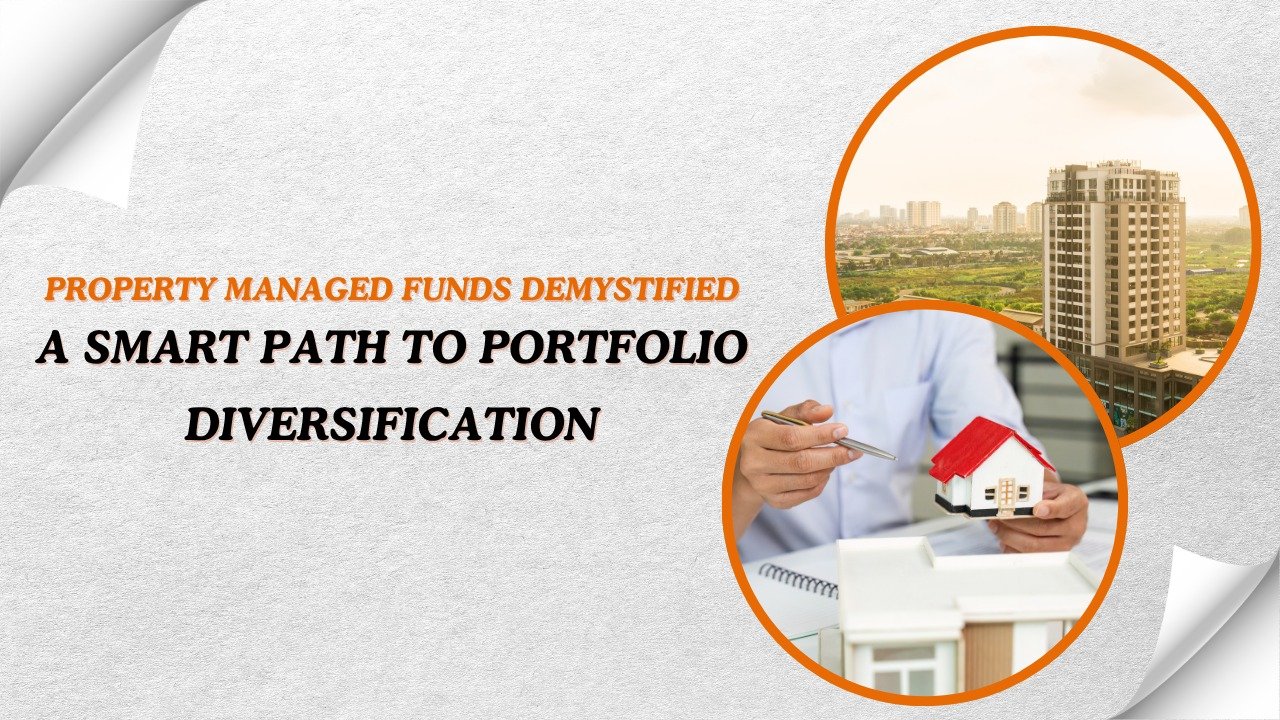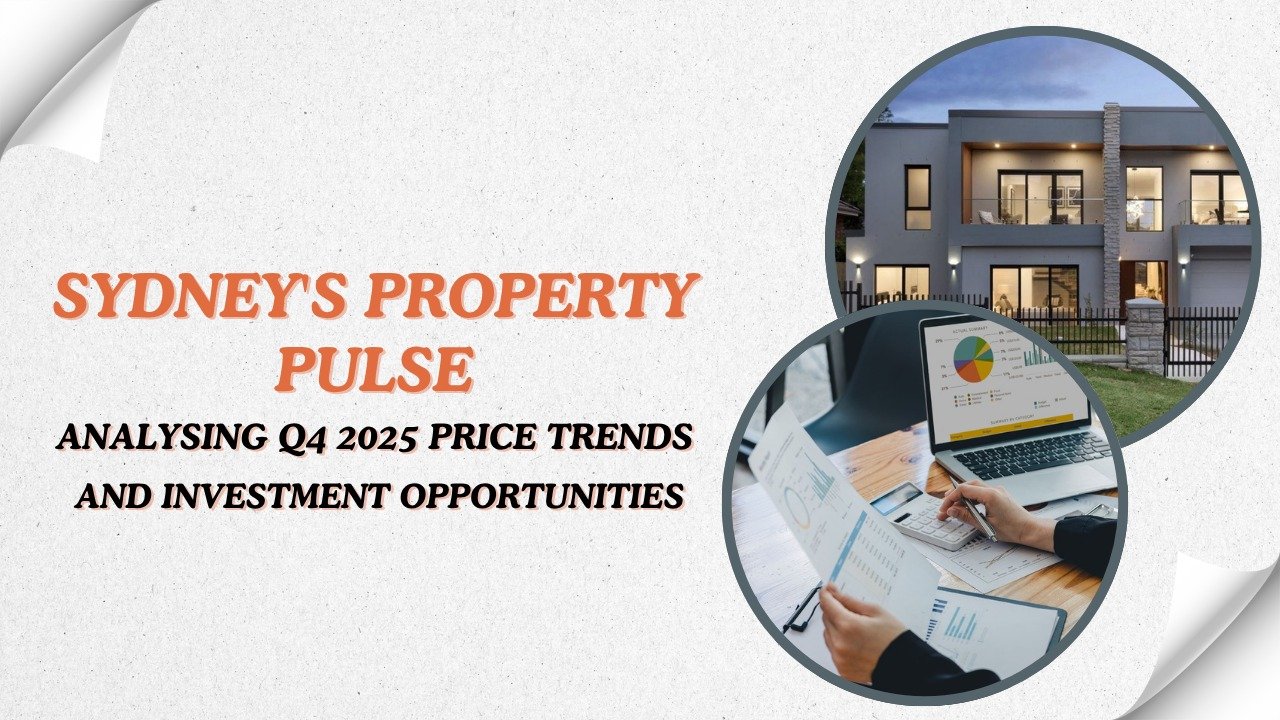Let’s talk about one of the biggest challenges in property...
Read MoreNewsfeed
Share Article
Categories/Tags
Register To Our E-News
Latest News
The Power of Research: How Commercial Property Analysis Uncovers Hidden Gems
Walk down any major city street in Australia, and you’ll...
Read MoreTop 5 Data-Driven Real Estate Investment Strategies for 2025
Let’s be honest: the days of buying any property and...
Read MoreAustralian Property Price Trends: A National Overview for Investors
Trying to get a clear read on the Australian property...
Read MoreSydney’s Property Pulse: Analysing Q4 2025 Price Trends and Investment Opportunities
Let’s be honest, trying to pin down the Sydney house...
Read More
Property Managed Funds Demystified: A Smart Path to Portfolio Diversification
Let’s talk about one of the biggest challenges in property investing: putting all your eggs in one basket. You’ve worked

The Power of Research: How Commercial Property Analysis Uncovers Hidden Gems
Walk down any major city street in Australia, and you’ll see them: commercial properties. The office tower, the neighbourhood shopping

Top 5 Data-Driven Real Estate Investment Strategies for 2025
Let’s be honest: the days of buying any property and watching its value skyrocket are long gone. Today’s property market

Australian Property Price Trends: A National Overview for Investors
Trying to get a clear read on the Australian property market can feel like trying to predict the weather in

Sydney’s Property Pulse: Analysing Q4 2025 Price Trends and Investment Opportunities
Let’s be honest, trying to pin down the Sydney house price market can feel like trying to predict the weather.

How to Invest with a Property Fund: A Step-by-Step Guide to Getting Started
You’ve decided that direct property investment—the 3am plumbing emergencies, the tenant dramas, the sheer concentration of capital—isn’t for you. But
Industry
Top 5 Data-Driven Real Estate Investment Strategies for 2025
-
Real Estate Science

Let’s be honest: the days of buying any property and watching its value skyrocket are long gone. Today’s property market feels like a complex puzzle, where gut feelings and “hot tips” are a fast track to mediocre results. So, what separates the successful investors from the rest?
The answer is data.
In 2025, the most powerful real estate investment strategies aren’t based on speculation; they’re built on a foundation of cold, hard facts. It’s about replacing emotion with evidence to build a resilient and profitable portfolio.
Whether you’re a seasoned investor or just starting your journey, leveraging data is your ultimate advantage. Let’s dive into the top five data-driven real estate investment strategies that are poised to deliver results in the year ahead.
1. The Demographic Deep Dive: Follow the People, Not Just the Prices
The Strategy: Instead of just looking at past price growth, this strategy involves analysing demographic data to predict future demand. You’re investing in locations before the major price surges happen, by understanding who is moving in and why.
The Data You Need:
- Population Growth & Age Profiles: Is the area attracting young families (look for 3-4 bedroom homes), downsizers (look for low-maintenance apartments), or students (look for high-yield share houses)? The Australian Bureau of Statistics (ABS) is a goldmine for this data.
- Income Levels & Employment Trends: Are high-income industries moving into the area? A suburb with a new tech hub or hospital will see different demand to one reliant on a single, declining industry.
- Infrastructure Pipelines: Cross-reference population data with planned infrastructure. New train lines, schools, and hospitals are magnets for growth.
In Practice: You might discover a suburb with a rising number of 30-39 year-olds and a new primary school being built. This is a strong signal for future family home demand.
2. The Yield & Growth Balancing Act
The Strategy: This is about moving beyond the simplistic “growth vs. yield” debate. The goal is to find markets or property types that offer a compelling blend of both—strong rental income to cover costs today, and solid capital growth potential for tomorrow.
The Data You Need:
- Rental Yield Calculations: Don’t just look at gross yields. Calculate net yields after factoring in strata, council rates, and management fees.
- Vacancy Rates: A low and falling vacancy rate (below 1.5%) is a powerful indicator of high rental demand, which protects your income and can allow for rental increases.
- Days on Market: Track how long rental properties and properties for sale are sitting on the market. Shorter cycles mean hotter demand.
In Practice: You might identify a middle-ring suburb where yields are strong (4.5%+) due to high rental demand from professionals, and where recent sales data shows a steady 4% annual price growth. This balance creates a more resilient investment.
3. The Value-Add Algorithm: Creating Equity Through Data
The Strategy: This involves using data to identify undervalued properties where a strategic renovation or redevelopment can force an increase in value. This is about “manufacturing” growth rather than just waiting for it.
The Data You Need:
- Comparative Market Analysis (CMA): Deep-dive into recent sales of both renovated and unrenovated comparable properties. What is the exact value-add of a new kitchen or bathroom in that specific suburb?
- Development Application (DA) Trackers: Monitor local council approvals to understand what your neighbours are doing and the costs involved.
- Cost Data: Have accurate, localised data on renovation costs per square metre to ensure your project remains profitable.
In Practice: Data might show that in a certain suburb, adding a granny flat increases property value by an average of $250,000, while only costing $150,000 to build—a clear $100,000 equity gain.
4. The Sector-Specific Rotation
The Strategy: Recognise that “real estate” isn’t one asset class. The best real estate investment strategies involve rotating focus between sectors—residential, commercial, industrial—based on economic cycles and data trends.
The Data You Need:
- Economic Indicators: Follow GDP growth, retail spending, and business confidence indices from sources like the Reserve Bank of Australia (RBA).
- Sector-Specific Metrics: For industrial, look at warehouse vacancy rates and freight volumes. For retail, analyse foot traffic and retail turnover figures.
- Office Demand Reports: Track sub-lease availability and the premium for high-quality, sustainable (ESG) office spaces versus older stock.
In Practice: In 2025, data might reveal that the industrial sector continues to thrive due to e-commerce, while the office sector is bifurcated, creating opportunities in premium, well-located assets.
5. The Macro-to-Micro Filter
The Strategy: This is a top-down approach that ensures your local investments are aligned with powerful, long-term national trends. It prevents you from investing in a declining asset class, no matter how good the individual property seems.
The Data You Need:
- Interest Rate & Inflation Forecasts: Understand the cost of capital and its future direction.
- Government Policy: Analyse policies on migration, first-home buyer incentives, and infrastructure spending.
- Technology Adoption Trends: Consider the impact of remote work, e-commerce, and automation on different property types.
In Practice: The macro trend of working from home has micro implications. It might reduce demand for CBD studio apartments while increasing demand for properties with home offices in lifestyle-oriented coastal or regional hubs.
Bringing It All Together: You Don’t Have to Be the Data Scientist
For an individual investor, consistently gathering, cleaning, and analysing this depth of data is a monumental task. This is the core challenge of modern real estate investment strategies.
The most efficient path is often to partner with experts who have built this capability. At Real Estate Science Fund, data isn’t just a tool; it’s our foundation. Our entire process is built on a scientific methodology that continuously scans for these precise opportunities, taking the guesswork out of building your portfolio.
<a href=”https://realestatesciencefund.com.au/”>Learn more about how we leverage data to power our investment decisions and build resilient portfolios for our investors</a>.
The Final Word
In 2025, the most successful real estate investment strategies will be those that are guided by evidence. By embracing a data-driven approach—whether you do it yourself or through a professional fund—you can navigate market complexity with greater confidence, mitigate risks, and uncover opportunities that others simply can’t see.
Stop guessing. Start analysing.
Disclaimer: This blog post contains general information only and does not constitute financial or investment advice. You should consider seeking independent legal, financial, taxation or other advice to check how the information relates to your unique circumstances.



